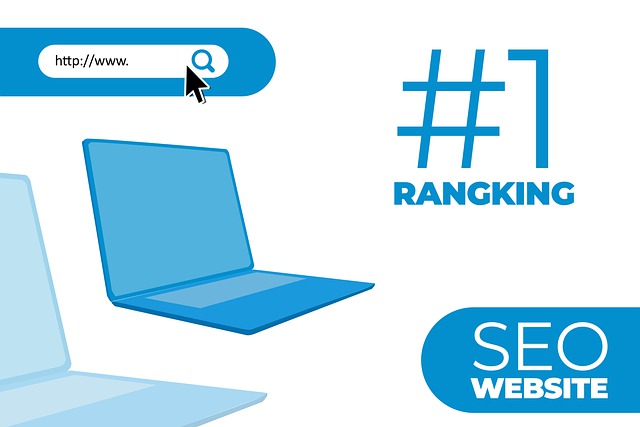SEO web design optimizes websites for both search engines and users, integrating best practices like keyword research, strategic content placement, mobile responsiveness, and user experience (UX) enhancements. Key components include understanding user journeys, optimizing navigation hierarchies, implementing internal linking, and ensuring fast loading times. By combining these techniques, SEO web design boosts rankings, attracts organic traffic, and fosters connections with target audiences through improved online visibility and enhanced UX.
In today’s digital landscape, a search engine optimized (SEO) website is pivotal for online success. This comprehensive guide explores the intricate elements of SEO web design, from foundational principles to advanced strategies. We delve into key components, keyword research, on-page optimization, technical SEO, user experience (UX), mobile optimization, and building quality backlinks. By understanding these aspects, businesses can enhance visibility, attract relevant traffic, and ultimately drive conversions through effective SEO web design.
Understanding SEO Web Design: The Foundation of Online Visibility

SEO web design is more than just optimizing content; it’s about structuring a website in a way that aligns perfectly with how search engines crawl and index pages. At its core, effective SEO web design considers user experience and search engine algorithms as intertwined elements. A well-designed site not only provides easy navigation, fast loading times, and mobile responsiveness but also incorporates strategic keyword placement, meta tags, and structured data to signal relevance to search engines.
The foundation of online visibility lies in understanding the user’s journey and tailoring the website’s architecture accordingly. This involves creating a clear hierarchy with relevant headings, optimizing images, and ensuring internal linking fosters seamless exploration. By integrating best practices in SEO web design, websites can significantly improve their rankings, attract more organic traffic, and ultimately, connect with their target audience more effectively.
Key Components: What Makes a Website Search Engine Friendly?

A search engine-optimized (SEO) website is crafted with a keen understanding of what drives online visibility. At its core, SEO web design involves a strategic interplay of several key components. One of the fundamental aspects is keyword integration, where relevant and targeted keywords are seamlessly woven into page content, titles, headings, and meta descriptions. This guides search engines to accurately index and rank the site for specific user queries.
Moreover, SEO-friendly websites prioritize user experience (UX) and mobile responsiveness. Fast loading times, intuitive navigation, and compatibility across devices ensure visitors have a positive experience. Search engine algorithms factor in these user signals, rewarding sites that offer value and accessibility. Efficient internal linking structures also play a crucial role, helping search engines understand the site’s hierarchy and context, which can improve crawlability and indexation.
Keyword Research: Unlocking the Power of Relevant Traffic

Keyword research is a fundamental aspect of search engine optimization (SEO) that involves identifying and understanding the terms and phrases users type into search engines. By conducting thorough keyword research, web designers can unlock the power of relevant traffic. This process helps in tailoring content to match user intent, ensuring that the website resonates with its target audience. SEO web design professionals utilize tools to analyze search volume, competition, and user behavior to uncover valuable keywords.
Relevant keywords act as a bridge between users searching for solutions and your website offering those solutions. By strategically integrating these keywords into web content, metadata, and URLs, you enhance the visibility of your site in search results. This, in turn, increases organic traffic, improves user experience, and boosts the overall success of SEO efforts.
On-Page Optimization: Crafting Content for Both Users and Search Engines

Crafting content that resonates with both users and search engines is a key pillar of on-page optimization, an essential aspect of SEO web design. It involves understanding your target audience while also incorporating strategic keywords and phrases that search algorithms prioritize. This dual focus ensures that not only do visitors find your website relevant and engaging, but search engines recognize it as a valuable resource for their users.
Effective on-page optimization starts with high-quality content creation. This includes well-researched and informative copy that addresses user queries and provides value. Incorporating keywords naturally within headings, subheadings, meta descriptions, and body text enhances both readability and SEO. Additionally, optimizing images with alt tags and ensuring a mobile-friendly design further strengthens your website’s on-page optimization efforts, contributing to better search engine rankings.
Technical SEO: Ensuring Your Site is Accessible and Indexable

Technical SEO plays a crucial role in making your website accessible and indexable for search engines, like Google. It involves optimizing key technical aspects of your site to ensure search engine crawlers can easily discover, understand, and interpret your content. This includes implementing structured data markup, ensuring XML sitemaps are up-to-date, and using canonical tags to avoid duplicate content issues. Additionally, optimizing website speed, mobile responsiveness, and improving internal linking structures enhances the overall user experience, which search engines prioritize.
Effective SEO web design incorporates these technical practices to create a solid foundation for your site’s online visibility. By ensuring your website is technically sound, you enable search engines to efficiently crawl and index your pages, resulting in better search rankings over time. This, in turn, increases organic traffic and improves your online presence.
User Experience (UX) Design: Creating an Engaging and Conversional Path

User Experience (UX) Design plays a pivotal role in crafting search engine optimized websites that captivate and engage visitors. By focusing on intuitive navigation, clear information architecture, and visually appealing layouts, UX design creates a seamless journey for users, encouraging them to explore further. This is crucial for SEO as improved user experience signals to search engines that a website is valuable, leading to better rankings over time.
A well-designed UX encourages interactions through compelling content, easy-to-use forms, and call-to-actions, fostering higher engagement rates and reduced bounce times. These factors contribute to a site’s overall SEO performance by increasing visibility in search results and building authority within the niche. Ultimately, a positive user experience drives conversions and fosters brand loyalty, making it an indispensable aspect of any successful SEO strategy.
Mobile Optimization: Adapting to the Dominant Device

In today’s digital era, mobile optimization is no longer an option but a necessity for any search engine optimized (SEO) website. With the vast majority of internet users accessing online content through their smartphones and tablets, SEO web design must adapt to accommodate this dominant device trend. Responsive web design, where a site seamlessly adjusts its layout and functionality across different screen sizes, has become the industry standard. This ensures that regardless of whether someone is browsing on an iPhone or an Android tablet, the website provides an optimal user experience.
A mobile-optimized site not only caters to users’ preferences but also positively impacts SEO rankings. Google, for instance, prioritizes mobile-friendly websites in its search results, meaning a mobile-optimized site stands a better chance of securing higher visibility and attracting more organic traffic. Moreover, mobile optimization enhances user engagement by enabling quick page loads, easy navigation, and clear content presentation, all factors that contribute to reduced bounce rates and increased time spent on the site—key metrics that search engines consider when evaluating website performance.
Building Quality Backlinks: Earning Trust from Authority Sites

In the realm of search engine optimized (SEO) websites, building quality backlinks is a strategic cornerstone. These links act as digital recommendations, signaling to search engines that your site is a credible and valuable resource. Earning backlinks from authority sites—webpages recognized as industry leaders by both users and search algorithms—is particularly impactful. Such sites carry significant weight, and their endorsement can significantly boost the trustworthiness of your SEO web design.
When high-authority sites link to your content, it demonstrates to search engines that your website offers authentic and trustworthy information. This recognition fosters a positive association with your brand and increases the likelihood of ranking higher in search results. Consequently, investing time and resources into creating compelling, shareable content and engaging in strategic outreach to gain backlinks from authority sites is an essential step in optimizing your site for maximum visibility and credibility.
Continuous Monitoring and Analysis: Refining Your SEO Strategy

In the dynamic landscape of digital marketing, continuous monitoring and analysis are paramount for refining your SEO strategy. Regularly reviewing website performance allows for the identification of areas that require optimization. Through advanced analytics tools, web designers and marketers can gain insights into user behavior, keyword rankings, and traffic sources. This data-driven approach enables them to make informed decisions, ensuring that the SEO web design remains agile and responsive to market changes.
By continuously monitoring, you can quickly adapt to algorithm updates from search engines like Google. These updates often impact ranking factors, and staying ahead of these changes is crucial for maintaining visibility. Analysis also helps in understanding what content resonates with your audience, allowing for the creation of more relevant and engaging material that improves user experience. This, in turn, boosts website authority and increases the likelihood of organic traffic growth.
